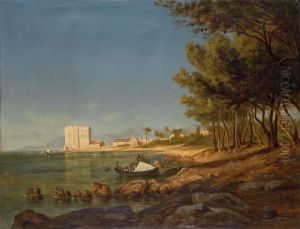Felix Choisnard Paintings
Félix Choisnard, born in 1876 and passing in 1953, was a French artist whose work, though not widely recognized in the mainstream art historical canon, presents a fascinating study of early 20th-century artistic movements in France. Choisnard's life and career spanned a period of significant transformation in the European art world, including the aftermath of Impressionism, the emergence of Modernism, and the dramatic shifts in cultural and artistic norms following the World Wars. His style evolved over the years, reflecting the changing tastes and artistic innovations of his time, yet he maintained a distinctive voice that set his work apart from that of his contemporaries.
Choisnard was educated in the arts at a time when Paris was the epicenter of the artistic world. The city offered him a rich tapestry of influences, from the fading echoes of Impressionism to the burgeoning movements of Fauvism and Cubism. Despite these influences, Choisnard never fully embraced the radical breaks with tradition that characterized some of his more famous contemporaries. Instead, he developed a style that harmonized traditional techniques with the new visual languages of the 20th century. His work often depicted landscapes, still lifes, and portraits, imbued with a sense of tranquility and a delicate sensitivity to light and color.
Throughout his career, Choisnard exhibited his work in various salons and group shows, though he never achieved the level of fame or recognition enjoyed by some of his peers. His reluctance to align himself firmly with any single artistic movement may have contributed to this relative obscurity. Despite this, his work was appreciated by those who knew it for its craftsmanship and the unique perspective it offered on the evolving French artistic landscape.
After his death in 1953, Félix Choisnard's contributions to art were gradually overshadowed by the towering figures of 20th-century art. However, in recent years, there has been a growing interest in rediscovering and reevaluating artists like Choisnard, whose works offer valuable insights into the complexities and nuances of their time. Today, his paintings can be found in private collections and occasionally in exhibitions focused on the period's lesser-known talents, where they continue to enchant viewers with their beauty and historical significance.


